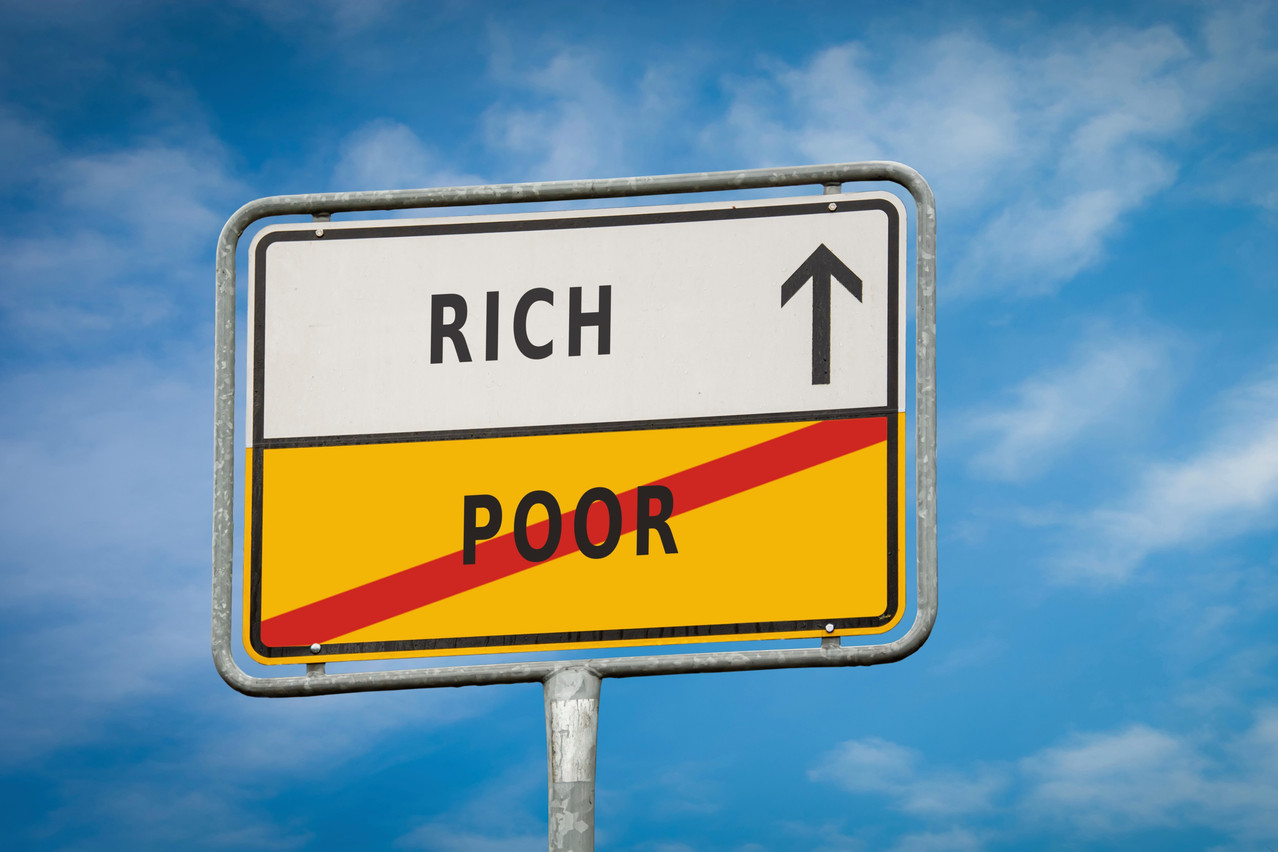Median salary should not be confused with average salary. The median salary is--statistically--a pivot that marks the boundary between two equal groups of employees, one receiving a salary above this level and the other one below. The average salary is the average of all salaries for a defined group of employees. It takes into account all salaries and is therefore heavily influenced by extreme values and, ultimately, less representative than a median salary.
A median salary that is 30% lower than the average salary, as in Luxembourg, reflects a high proportion of low-wage earners compared with high-wage earners. This imbalance is found in most economic domains, with the exception of the education, public administration and health sectors.
Between €135,797 and €33,110 gross per year
In 2022, a full-time worker in Luxembourg earned a gross annual salary of €75,919, including all forms of remuneration, according to data published in the . By way of comparison, according to INSEE (the French National Institute of Statistics and Economic Studies), the average salary in France in 2022 was €2,630 net per month, while the median salary was €2,091 net.
By way of further comparison, one in ten Luxembourg employees earns less than €33,110 gross per year--the minimum non-qualified social wage was €27,591 gross in 2022--while at the other end of the wage pyramid, one in ten employees earns more than €135,797 gross per year. And one in a hundred earns more than €284,715 gross a year.
Marked pay disparities
In Luxembourg, pay disparities are very marked. The average annual salary for directors and managers peaks at €148,242 euros per year, compared with €40,143 for elementary occupations. A graduate with at least a master’s degree can claim an annual salary of €115,892, while a worker who stopped at secondary school level can only claim an average salary of €43,772.
Read also
Given that 81% of employees in financial and insurance activities have a university degree, compared with just 11% in the hotel and catering sector, the difference in income between the former (€113,018) and the latter (€40,460) should come as no surprise. Finally, place of residence also affects pay levels: a resident will earn an average salary of €92,093 compared with €78,747 for a resident of foreign nationality and €65,487 for a cross-border commuter.
Happy employees in the financial sector
The country’s highest-paid sector is financial and insurance activities, with an average gross annual full-time equivalent (FTE) salary of €113,018. This is followed by education (€111,362), professional, scientific and technical activities (€105,145) and public administration (€100,458), according to Statec.
Read also
At the other end of the scale, we find the hotel and catering sector with an average gross annual salary of €40,461, the administrative and support services sector (cleaning, security, etc.) with €48,679 and the construction sector with €49,587. “The average gross annual salary in finance is almost 50% higher than the average for the economy as a whole, and the salaries paid in this sector are on average 2.8 times higher than those in the hotel and catering sector,” explains the Luxembourg statistical office.
Company size plays a role
Statec also notes that the gross annual salary increases with the size of the company. An employee in a company with between 10 and 49 employees earns an average gross annual salary of €66,120, while an employee in a company with 1,000 or more employees earns €92,286. The pay gap between the two is 40%.
The full study is available .
This article was originally published in .
